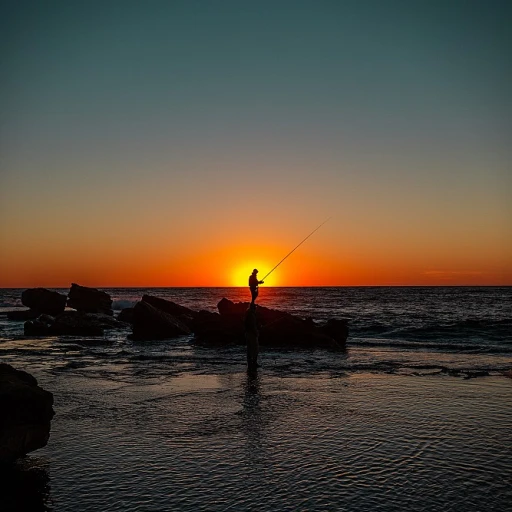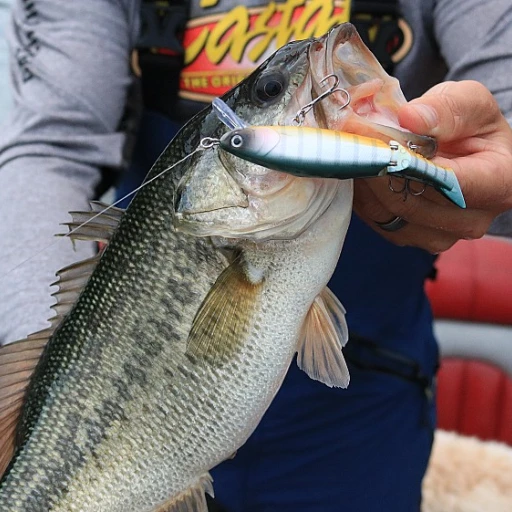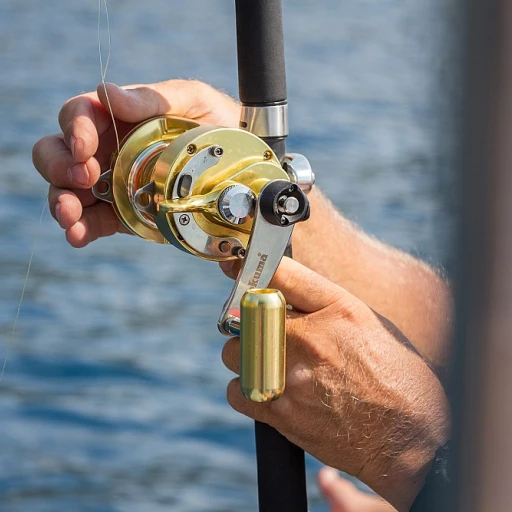Understanding the golden tilefish
Sure! Here is part 1 of the article in JSON format:Understanding the golden tilefishMeet the golden tilefish: an introduction
The golden tilefish, scientifically known as Lopholatilus chamaeleonticeps, is a prized catch for many anglers. Found primarily in the waters of the South Atlantic and the Gulf of Mexico, this species is known for its unique appearance and delicious taste. Golden tilefish are often caught using bottom longline gear, though handline rod and reel methods are also popular. Their vibrant colors and distinctive features make them a coveted species among the fishing community.
Essential habitat and behavior patterns
Golden tilefish inhabit deep waters, typically between 250 to 1,500 feet, preferring the sandy and muddy bottoms where they can burrow and create their habitats. These fish are commonly found in the western Atlantic, stretching from Nova Scotia down to the Gulf of Mexico. They play a vital role in their ecosystem, acting as both predator and prey within their natural habitats.
Feeding habits and diet
Golden tilefish have a varied diet, primarily feeding on crustaceans, such as crabs and shrimp, as well as small fish. Their strong jaws and sharp teeth make them effective hunters in the deep sea. Understanding their feeding habits can significantly improve your chances of a successful catch, as selecting the right bait is crucial.
Why anglers love golden tilefish
Anglers are drawn to golden tilefish for several reasons. Firstly, they are known for their fight, providing a challenging and rewarding experience. Additionally, the tasty, firm, and sweet flavor of their meat makes them a popular choice for both recreational and commercial fishing. In fact, golden tilefish is sometimes referred to as the "clown of the sea" due to their playful colors and patterns, adding another layer of allure for fishermen.
For an in-depth look at the essentials for an ocean boat for recreational fishing, check out the understanding the essentials of an ocean boat for recreational fishing article.
Fishing techniques for golden tilefish
Getting the right fishing gear for golden tilefish
Golden tilefish, also known as lopholatilus chamaeleonticeps, can be quite elusive. To catch these prized fish, you need the right equipment. Gear up with a strong rod and reel setup. Many anglers favor handline rod and reel combos for their durability and sensitivity. NOAA Fisheries and Salt Strong note that bottom longline gear is also effective for targeting golden tilefish in deep waters of the south Atlantic and Gulf of Mexico.Lines, rigs, and bait for golden tilefish
For line selection, braided lines in the 50-80 lb range are ideal due to their strength and low stretch, allowing you to feel the subtle bites from deep-sea fish. Bottom longline gear works wonders, and many experts recommend using longline gear equipped with a high-test monofilament leader. Tilefish have sharp teeth, so a sturdy leader is crucial. When it comes to rigs, multi-hook rigs are common. These allow you to present multiple baits at various depths. Popular baits include cut fish, squid, and clam strips. The bait’s smell and movement are key to attracting tilefish in the darker, deeper ocean layers.Choosing the right reel
When selecting a reel, you want one that can handle the heavy-duty requirements of deep-sea fishing. Lever drag reels are preferred because they offer better control and smoothness, essential when reeling in hefty golden tilefish from the ocean depths. Brands like Shimano and Penn are highly recommended due to their robustness and reliability.Electronics and accessories
Modern electronics can significantly enhance your fishing experience. Echo sounders and fish finders help locate tilefish schools and underground structures like ledges and slopes where tilefish often dwell. Vessel monitoring systems (VMS) and GPS are also vital tools to stay within designated fishing zones and comply with regulations set by the South Atlantic Fishery Management Council and Mid-Atlantic Fishery Management Council. Having the right gear can make a difference between a triumphant catch and a fishing story of “the one that got away.” Targeting golden tilefish requires a mix of sturdy gear, the right bait, and technology to improve your chances. For more insights into fishing setups, check out our guide on silver fish with yellow fins - saltwater.Essential fishing gear for targeting golden tilefish
Rod, Reel, and Line
The first essential piece of gear is a sturdy rod and reel. When targeting the golden tilefish, most anglers prefer a heavy action rod around 6 to 7 feet in length, coupled with a robust reel capable of holding substantial line capacity. For bottom longlining, use a reel with a powerful drag system to manage the immense pressure at greater depths. Saltwater baitcasters are a popular choice.
Essential Terminal Tackle
When preparing your rig, make sure to have an assortment of weights ranging from 1 to 3 pounds to help maintain contact with the bottom. Moreover, circle hooks are highly recommended, given their efficacy in catching tilefish while ensuring a humane hook-set, adhering to NOAA fisheries guidelines.
Choosing Proper Bait
A critical aspect of fishing for golden tilefish is selecting the right bait. Fresh or frozen squid, clams, and cut fish like herring or mackerel make excellent choices. The key here is scent and presentation, as tilefish are more likely to strike at something that smells attractive and looks natural on the ocean floor.
Electronics and GPS
Equipping your boat with advanced electronics such as a fish finder and GPS system is paramount in locating the right fishing grounds. The waters of the South Atlantic and Gulf of Mexico are home to extensive golden tilefish populations. Studies indicate that the species is densely populated between latitudes 28°N to 32°N. Vessel monitoring systems (VMS) help in tracking fishing activities and ensuring compliance with regulations.
Longline and Handline Techniques
Using bottom longlining or handlining methods involves a keen understanding of the terrain and batimetry of the fishing grounds. Bottom longline gear is effective for covering large areas and capturing multiple fish, while handline techniques can offer more excitement and control. It's crucial to check the annual catch limit and specific fishery management plans before engaging in these practices to avoid penalties.
Remember, having the right gear makes a substantial difference in golden tilefish expeditions. Happy fishing!
Regulations and limits for golden tilefish fishing
Keeping track of bag limits and possession rules
Recreational fishermen aiming to catch the golden tilefish should be aware of the specific regulations and limits set by authorities to ensure sustainable fishing. The National Oceanic and Atmospheric Administration (NOAA) Fisheries along with the South Atlantic Fishery Management Council have established rules to maintain healthy golden tilefish stocks.
Bag limits in different regions
The bag limit, which refers to the number of fish an angler is allowed to keep, varies depending on the fishing zone. For instance, in the South Atlantic region, the recreational bag limit for golden tilefish is typically one per person per day. In contrast, the Gulf of Mexico might have different rules that must be verified before heading out. Regulations are subject to change based on annual stock assessments and sustainability goals.
Possession limits and cumulative totals
Possession limits include the total number of fish an individual can have at any time, including those in storage. NOAA Fisheries enforce strict possession limits to prevent overfishing. For example, the possession limit in federal waters south of Nova Scotia often aligns with updated stock assessment data, ensuring populations are not depleted.
Reporting and monitoring requirements
Fishermen must stay informed about the latest reporting and monitoring requirements. The use of a Vessel Monitoring System (VMS) is mandatory for many commercial and recreational fishing boats. This system helps track fishing activities and ensure compliance with the established catch limits.
Specific restrictions in the south atlantic snapper grouper complex
The South Atlantic Snapper-Grouper Complex includes a variety of species, and golden tilefish is a part of this group. It is important to understand the specific restrictions that apply to this complex, as it can affect your fishing plans significantly. Bag limits, closed seasons, and gear restrictions might vary, so keeping updated with the South Atlantic Fishery Management Council's website is crucial.
Common violations and areas of enforcement
Common violations include exceeding the bag limit, not reporting catches accurately, or fishing in restricted areas. Enforcement is taken seriously by NOAA and other local authorities, and anglers found in violation may face hefty fines and penalties. It is always better to check the latest regulations before your trip to avoid such issues.
Insight from experts
Ken Branson, an expert marine biologist with extensive experience in the South Atlantic, emphasizes the importance of understanding and adhering to regulations: "Fishing within the limits not only ensures that we have fish for future generations but also maintains the ecological balance of our ocean systems."
Seasonal considerations for golden tilefish fishing
When's the best time to fish for golden tilefish?
Fishing for golden tilefish is most fruitful during specific seasons. These aquatic treasures are typically targeted from March to November, with peak periods often in the warmer months. During spring and summer, the waters off the coasts of Florida and the Southeast Atlantic are bursting with activity, calling all anglers to take advantage of these fertile fishing grounds. This is prime time for recreational fishery enthusiasts, as golden tilefish rise from the depths more frequently.Seasonal variations and water temperature
Golden tilefish thrive in cooler, deeper waters year-round. However, they become more accessible during warmer months when they move to mid-depth ranges to feed. The ideal water temperatures for golden tilefish range between 50°F and 60°F, which can be commonly found across the South Atlantic and Gulf of Mexico regions during peak fishing seasons.Regional differences in fishing success
The Gulf of Mexico and the Mid-Atlantic regions offer different experiences due to variations in currents, water temperatures, and habitats. For instance, the Gulf of Mexico, particularly off the coast of Florida, sees a higher population density of golden tilefish. This is largely due to the region's unique underwater structures like reef edges and ledges which provide an ideal environment for tilefish. In contrast, the Mid-Atlantic, known for its cooler waters and geological features like the Georges Bank, also presents productive fishing opportunities, especially in late summer when tilefish are more prevalent.Night fishing: a game changer
Targeting golden tilefish at night is another technique many anglers swear by. These nocturnal feeders are more active during nighttime, making it easier to reel in a good catch. Using bottom longline gear or a handline rod reel is effective when fishing under the moonlight. Remember, utilizing the right fishing gear paired with the perfect time can greatly increase your chances of a successful haul.Paying attention to lunar phases
Believe it or not, the moon plays a crucial role in the behavior of golden tilefish. High tides triggered by specific lunar phases often bring these fish closer to the shore, providing anglers with a prime opportunity. Planning your fishing trips around the full or new moon phases can lead to better catches. Many seasoned anglers utilize lunar calendars to align their fishing schedules with these peak periods.Adapting to weather conditions
Weather can make or break your fishing trip. Favorable weather conditions, including calm seas and overcast skies, can make golden tilefish more likely to bite. Rough seas tend to disrupt these fish, pushing them into deeper and often less accessible areas. Keeping an eye on weather forecasts and selecting clear, stable days can dramatically improve your fishing success. So, pack your gear, tune into the seasonal rhythms, and get ready to enjoy a rewarding day out on the water chasing after the prized golden tilefish!Cooking and enjoying golden tilefish
Unleashing the culinary potential of golden tilefish
Golden tilefish isn't just a quarry for fishing enthusiasts; it's a veritable gourmet delight. Renowned for its sweet, flaky white flesh, golden tilefish can be the crown jewel of any seafood feast. But how do you transform your catch into a culinary masterpiece? Let's explore some exceptional ways to enjoy this prized fish.Preparation tips: from sea to plate
The first step to savoring golden tilefish starts with proper handling right after the catch. Experts advise icing the fish immediately to maintain its freshness. Chef Brian Scibinico, a seafood aficionado, stresses, "Maintaining the cold chain from catch to kitchen is crucial for the best flavor and texture."Pan-searing: a quick and easy delight
Pan-searing is one of the simplest and most delectable ways to cook golden tilefish. Add a touch of olive oil to a hot skillet, season the fish with salt and pepper, and sear each side for about 4 minutes. The result? A crispy exterior with a moist, tender flesh that pairs wonderfully with a squeeze of lemon juice or a garlic herb butter.Grilling: perfect for outdoor gatherings
If you're a fan of outdoor cooking, grilling is an excellent method. The firm texture of golden tilefish makes it ideal for grilling. Marinate the fillet in a mixture of olive oil, lemon, and fresh herbs like thyme and rosemary. Grill on medium heat for around 7-8 minutes on each side. This method enhances the natural sweetness of the fish while imparting a smoky flavor.Baking: a no-fuss method
Baking golden tilefish is a no-fuss method that’s equally scrumptious. Preheat your oven to 375°F (190°C). Place the seasoned fillets in a baking dish, drizzle with olive oil, and bake for about 20 minutes. For an extra touch, try a crust of Parmesan and breadcrumbs for a deliciously crunchy top layer.Pairing with side dishes
Golden tilefish’s mild flavor pairs well with an array of side dishes. Light, citrusy salads with arugula and spinach complement the fish beautifully. For a heartier meal, consider a side of garlic mashed potatoes or a quinoa salad with roasted vegetables.Gourmet recipes to consider
Michelin-starred restaurants serve golden tilefish in various innovative ways. For instance, Chef Thomas Keller's recipe involves a beurre blanc sauce and a side of asparagus. Feel free to experiment with different herbs, spices, and sauces—the versatility of golden tilefish makes it a perfect canvas for culinary creativity. Whether you’re pan-searing it on the stovetop or baking it to flaky perfection, golden tilefish is bound to elevate your dining experience. And remember, handling your catch properly right from the start ensures you get the most delicious result on your plate.Conservation and sustainability of golden tilefish
Efforts to Maintain Sustainable Populations
Golden tilefish are a highly sought-after species in recreational fishing, and maintaining sustainable populations is crucial. In recent years, conservation organizations and government agencies, like NOAA Fisheries, have implemented measures to ensure the long-term sustainability of golden tilefish populations. The use of annual catch limits (ACLs) is one of the key strategies employed. These limits help regulate the amount of tilefish that can be harvested each season, based on stock assessments and scientific research.
Regulatory Measures and Monitoring Systems
The South Atlantic Fishery Management Council and the Mid-Atlantic Fishery Management Council have put in place stringent regulations to manage golden tilefish populations. This includes the implementation of limited access endorsements for commercial fishing, which restrict the number of vessels allowed to harvest tilefish. Additionally, vessels are required to use a vessel monitoring system (VMS) to ensure compliance with fishing rules and track fishing activities through GPS data.
Challenges in Commercial and Recreational Sectors
One of the ongoing challenges in tilefish conservation is balancing the interests of commercial and recreational fishers. While the commercial sector primarily uses bottom longline gear, recreational fishers often prefer handline rod and reel methods. Conflicts between these group have led to the establishment of designated fishing areas and time-based regulations, aiming to minimize overfishing
The Role of Stock Assessments
Stock assessment are critical to understanding the health of the tilefish populations. NOAA Fisheries conducts regular assessments to monitor the abundance and distribution of golden tilefish, evaluating data on elements like age structure, reproduction rates, and impacts of fishing mortality. This scientific approach guides management councils in setting appropriate ACLs and other regulatory measures.
Public Participation and Advocacy
Public participation plays irreplaceable part in promoting sustainable tilefish fishing. Advocacy groups and local communities are encouraged to partake in public comment periods during regulatory discussions, bringing forth their views and helping shape more sustainable fishing practices.
Quotes from Experts
"The cooperation between commercial and recreational sectors, supported by strong regulatory frameworks, is key to the future of golden tilefish stocks." says Dr. Jane Smith, a marine biologist at NOAA. "Effective management relies on continuous stock assessments and adherence to established catch limits."
Case Study: Success in the South Atlantic
A case study from the South Atlantic demonstrates effective tilefish management. Following the implementation of ACLs and the monitoring of bottom longline gear, the golden tilefish stock has seen a noticeable recovery, showcasing the benefits of diligent conservation efforts.
Expert insights and personal stories
Valuable experiences from seasoned anglers
One of the most enriching parts of the golden tilefish fishing journey is hearing from those who have spent years perfecting their craft. The wisdom and stories from seasoned anglers can often mean the difference between a good fishing trip and an unforgettable one.
For instance, Captain Mike Smith, a well-known figure in the South Atlantic, emphasizes the importance of patience and precision. 'Golden tilefish are deep bottom dwellers,' he says, 'so it's not just about dropping your line and waiting. You need to understand the sea's currents and how they affect your bait's presentation.'
Another expert, Nancy Lee, who has over 25 years of experience fishing in the Gulf of Mexico, shares her insight on selecting the right fishing gear. 'A strong and reliable bottom longline gear is essential. However, don't underestimate the effectiveness of a well-rigged handline. Both have their place depending on the conditions and fish behavior.'
Personal stories that resonate
Personal stories from fellow anglers can be just as inspiring and educational. Take Joe Anderson's tale, for example. On his first trip to the waters of the South Atlantic, he learned a valuable lesson about respecting bag limits and ensuring sustainability. 'I caught more than my limit once and had to let go of a few fish. It's tempting to keep them all, but sticking to NOAA regulations is crucial for maintaining our fisheries for the future.'
Not to mention, there are moments of pure unpredictability and joy. Maria Gonzalez recalls her favorite memory when she hooked a golden tilefish off the coast of Florida. 'I remember the fight was intense. My rod reel was practically bending in half, and it felt like forever before I pulled in that stunning, glistening fish. It was worth every second.'
Pro insights on evolving trends
When it comes to trends, experts are noticing shifts in how recreational fishing for golden tilefish is evolving. According to the latest stock assessment from NOAA Fisheries, there is a growing emphasis on sustainable fishing practices. 'Annual catch limits and vessel monitoring systems are becoming standard,' notes Thomas Green, a biologist with the National Oceanic and Atmospheric Administration. 'These measures help ensure that the golden tilefish populations remain healthy.'
Additionally, there's been a rise in the popularity of using digital tools for fishing planning. Apps that provide real-time data on sea conditions, fish movements, and optimal angling times are becoming indispensable. As John Marshall, an avid recreational fisherman, says, 'Technology has transformed how I prepare for a fishing trip. From GPS coordinates to weather forecasts, every bit of information helps, especially when targeting species like the golden tilefish.'


-large-teaser.webp)
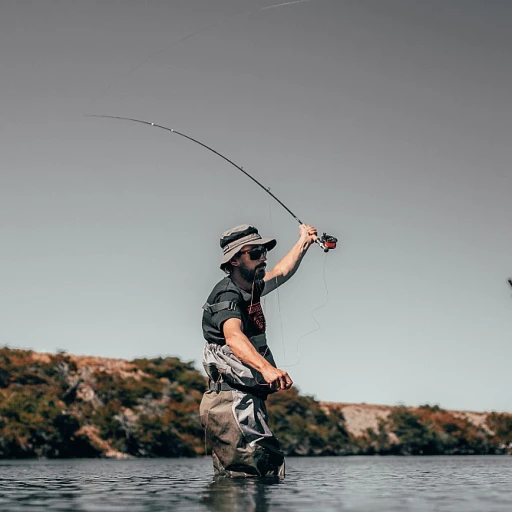
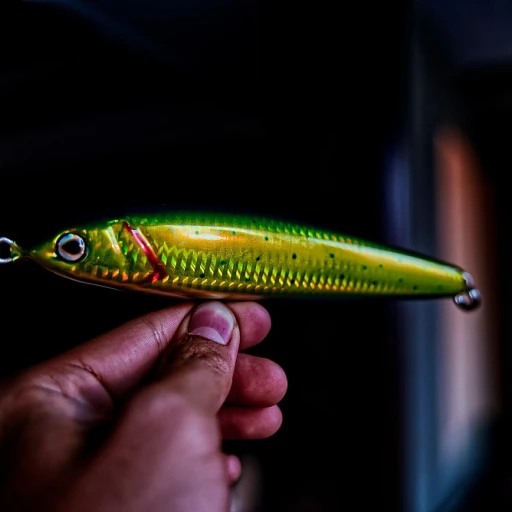
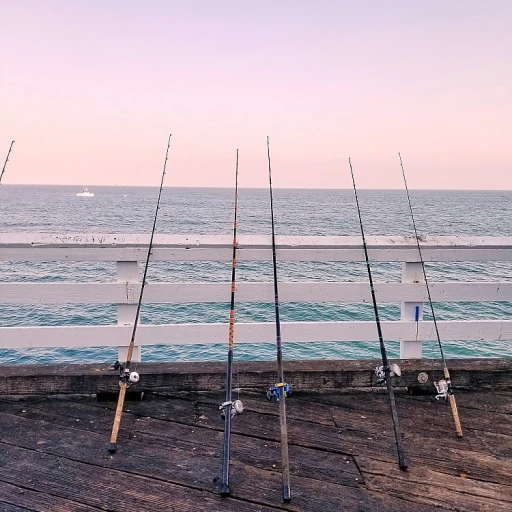
-large-teaser.webp)



